Rear Axle Control Arms and Links
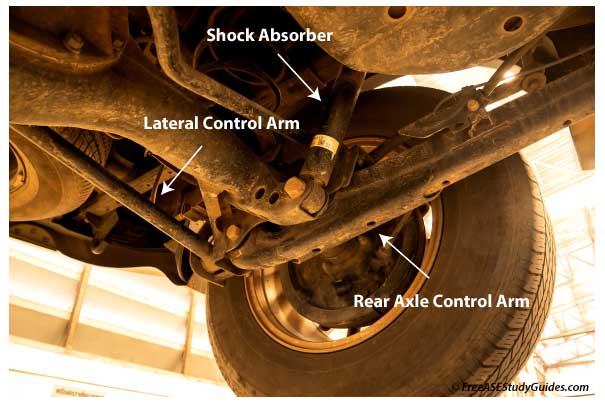
Solid drive axles are held in place and prevented from excess movement with control arms, strut rods, and (lateral control) track bars. Due to their design and small contact area on the chassis, coil spring suspension systems usually require more control arms and links than other types.
Drive axles move up and down with acceleration and side to side as the driver negotiates turns. Track bars control side-to-side movement and are installed laterally along the axle.
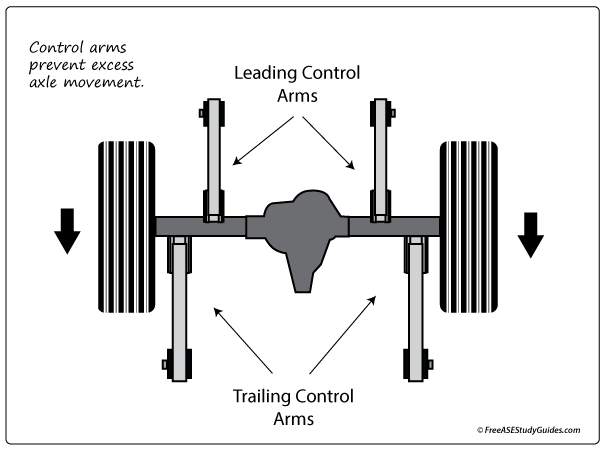
Control arms fastened to the body by a large rubber bushing and extending back to the axle ahead of the wheel are trailing control arms, and control arms that extend forward toward the axle are leading control arms.
Control Arm Bushings

If the vehicle's rear is squeaking, inspect the control arm and track bar bushings for wear.
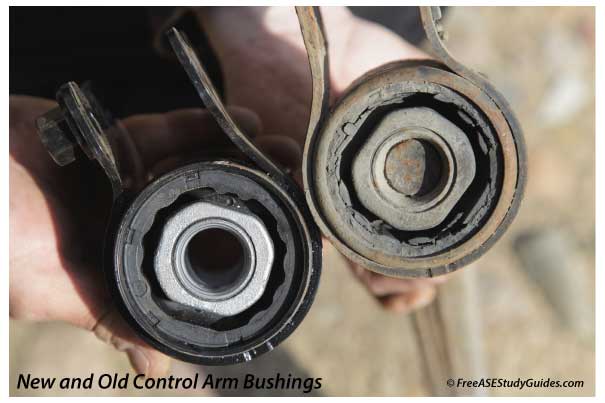
They are typically one-piece bushings made of natural or neoprene rubber. Replace the bushing or the entire control arm, track bar, or strut rod if it has excessive wear or damage.
Thrust Angle
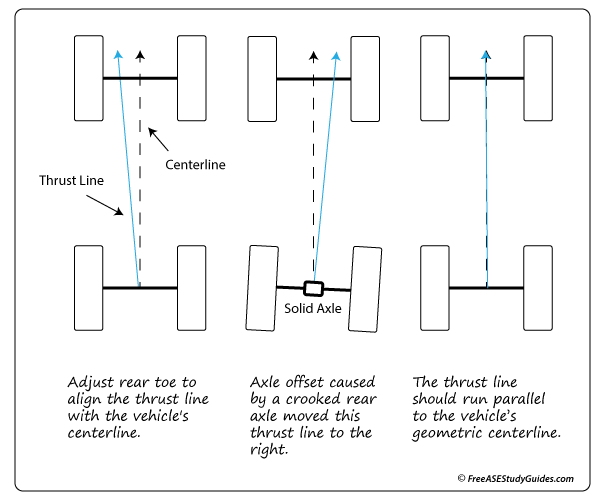
Axle offset occurs when a solid axle is crooked and not square with the front tires. Perform a thrust angle alignment on a vehicle with a solid axle. The thrust line should line up with the vehicle's geometric centerline.
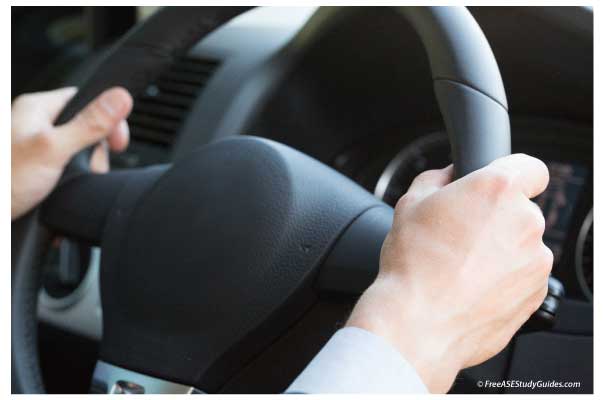
A vehicle's thrust angle affects its steering wheel position. On vehicles with trailing arm suspension, worn or damaged bushings or a bent arm can cause a noticeable pull in the steering.